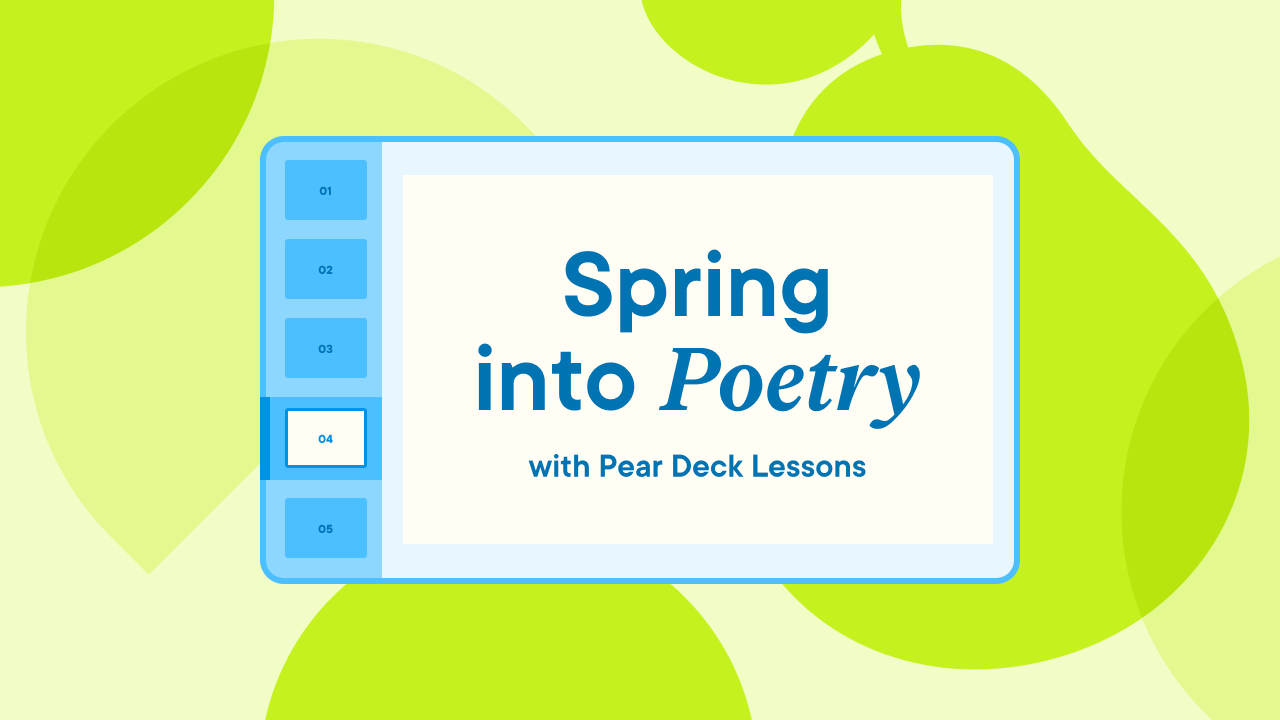Power Engaging Professional Development with Pear Deck

Let’s be honest for a second: professional development (PD) isn’t always the most riveting part of a teacher’s job. But we've all experienced the value of that time to focus on learning and improving! When you're in the presenter's seat and have a lot on the agenda, it's vital the information is delivered in an engaging way. Learn how you can power engaging professional development with Pear Deck!
Different question types allow you to support an array of engagement strategies in your presentations so attendees want to contribute and participate. Here’s how Pear Deck can help you bring your professional development presentations to life, all while modeling use to support instructional best practices!
Check the pulse of the room
Just like in the classroom with your students, creating a safe space for teachers to share their ideas and express themselves is the foundation of an engaging and effective discussion.
Whether you’re asking teachers to share in a “Rose, Thorn, Bud” activity or using a Drawing Slide to offer a creative and fun reflection prompt, building in the time in the first few minutes for sharing and connection will set the scene for an engaging and meaningful discussion during the rest of your presentation. (Especially for the less exciting parts, like introducing a new policy.)

Speaking of introducing a new policy… (We can almost hear the groans from here!)
Engage prior knowledge
Sometimes professional development requires discussing material that isn’t terribly exciting. It can be pretty hard to jazz up discussion about a new policy or procedure, but this a problem teachers face regularly! Once again, this is a great opportunity to model ways of engaging students even through necessary but boring content.
Before launching into the details of the new policy, tap into your faculty’s knowledge. By prompting them to think about the intention behind a change, you engage their minds. Instead of zoning out while you explain, they are engaged in the problem and thinking more thoughtfully about the purpose of the new policy.

Give your attendees a voice
When establishing a classroom culture, an effective strategy for helping students feel welcomed and valued is to include them in the construction of class rules and norms. We similarly want teachers to feel the same — that their voices matter when it comes to creating a caring and supportive learning community.
When using Pear Deck’s question types to solicit feedback, ideas, or questions, you have the ability to engage every person in the room individually while also prompting discussion for the greater group. With the Projector View, you can Show and Highlight Responses while also preserving anonymity if needed, helpful for both holding participants accountable and sharing creative ideas and insights with the group!
Control the pace of the presentation
We all know what happens when you hand students — or adults — the full deck of slides or packet of papers at once. It only takes a few seconds before a handful of people are flipping to the back and starting to fill out a worksheet or survey.
While individual pacing is key to some activities, when you’re in a training setting, it’s important everyone follow along step-by-step. This is where Pear Deck’s Instructor-Paced Mode and Student-Paced Mode come in! With the ability to turn on and off presenter-led pacing, you can structure portions of your presentation for group activities or individual reflection time and then bring everyone back together for synchronous discussion when needed.

Get feedback & share resources
Pear Deck lets you hear from your attendees in real-time, as well as after your training ends. To get the most out of your participants’ ideas and insights, you can build reflection and Q&A time right into your presentation. Giving teachers the time and tools to reflect during PD sessions can make the difference between merely receiving new information and truly internalizing it.
For you as the presenter, some of the most critical insight is how they’re thinking and feeling about what they heard during your presentation. Are there questions or concerns about new information? Confusion about responsibilities and next steps? The “End of Lesson” section of the Template Library in the Pear Deck Sidebar has a variety of templates designed to inspire attendees to think about concepts on a deeper level or share feedback. (Since all Pear Deck templates are editable, feel free to make them your own or add a little levity with emojis or GIFs!)

Once the Session has ended, all participants will receive a copy of your slides, including their responses and any feedback you’ve sent them individually, making it quick and easy to ensure relevant resources from the discussion are in their hands and digital drives.
Plan for your best PD yet
No matter what material you have to cover in your next PD session, you can model great instruction (and Pear Deck best practices) for your colleagues or faculty. When you model the type of engaging instruction you want to see in the classroom, you are setting the foundation for engaged classrooms throughout your school.
Hosting a professional development for colleagues specifically about Pear Deck? Register for Share the Pear to get everything you need, including a training deck, detailed presenter notes, and instructions for your session.



